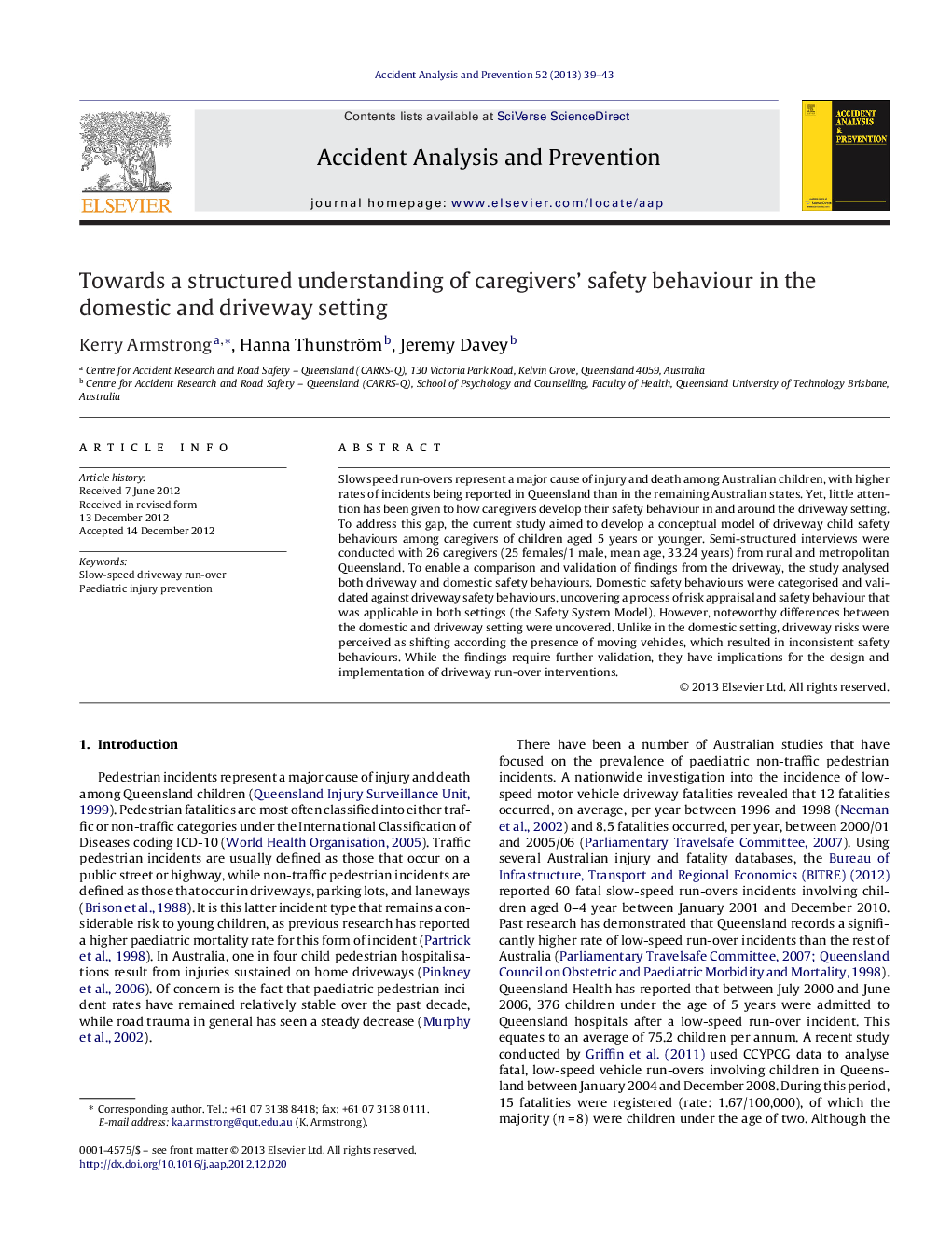| Article ID | Journal | Published Year | Pages | File Type |
|---|---|---|---|---|
| 572541 | Accident Analysis & Prevention | 2013 | 5 Pages |
Slow speed run-overs represent a major cause of injury and death among Australian children, with higher rates of incidents being reported in Queensland than in the remaining Australian states. Yet, little attention has been given to how caregivers develop their safety behaviour in and around the driveway setting. To address this gap, the current study aimed to develop a conceptual model of driveway child safety behaviours among caregivers of children aged 5 years or younger. Semi-structured interviews were conducted with 26 caregivers (25 females/1 male, mean age, 33.24 years) from rural and metropolitan Queensland. To enable a comparison and validation of findings from the driveway, the study analysed both driveway and domestic safety behaviours. Domestic safety behaviours were categorised and validated against driveway safety behaviours, uncovering a process of risk appraisal and safety behaviour that was applicable in both settings (the Safety System Model). However, noteworthy differences between the domestic and driveway setting were uncovered. Unlike in the domestic setting, driveway risks were perceived as shifting according the presence of moving vehicles, which resulted in inconsistent safety behaviours. While the findings require further validation, they have implications for the design and implementation of driveway run-over interventions.
► We focused on caregivers’ domestic and driveway child safety behaviour. ► Semi-structured interviews were conducted with 26 caregivers of young children. ► A model of caregiver risk appraisal and safety behaviours was developed. ► Differences between the domestic and driveway setting were highlighted, most notably the tendency of caregivers to view the safety of the driveway as shifting.
